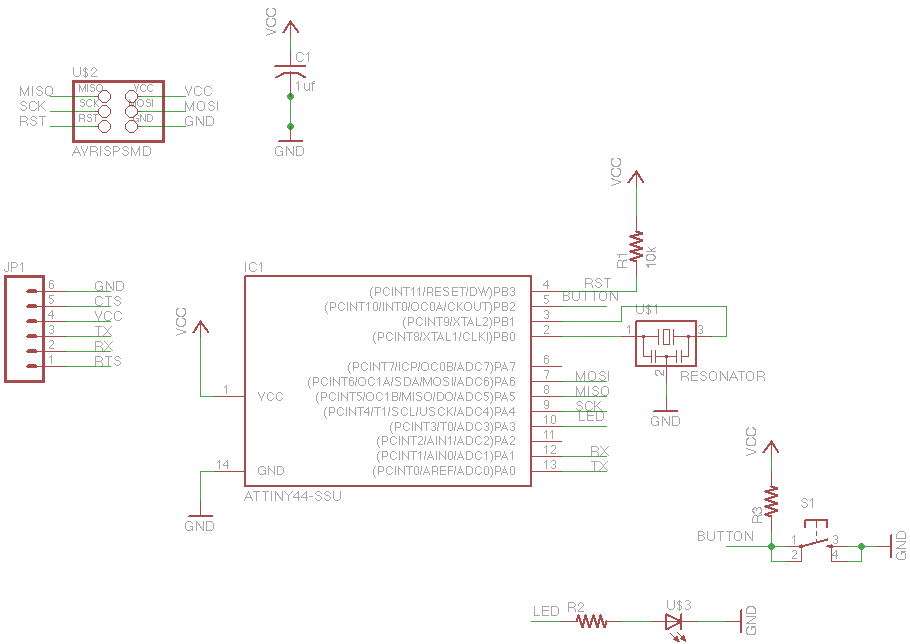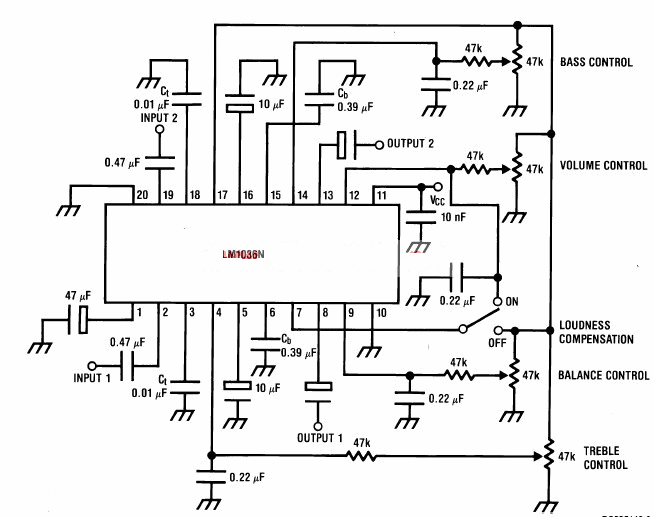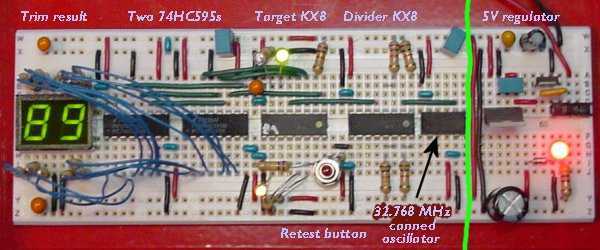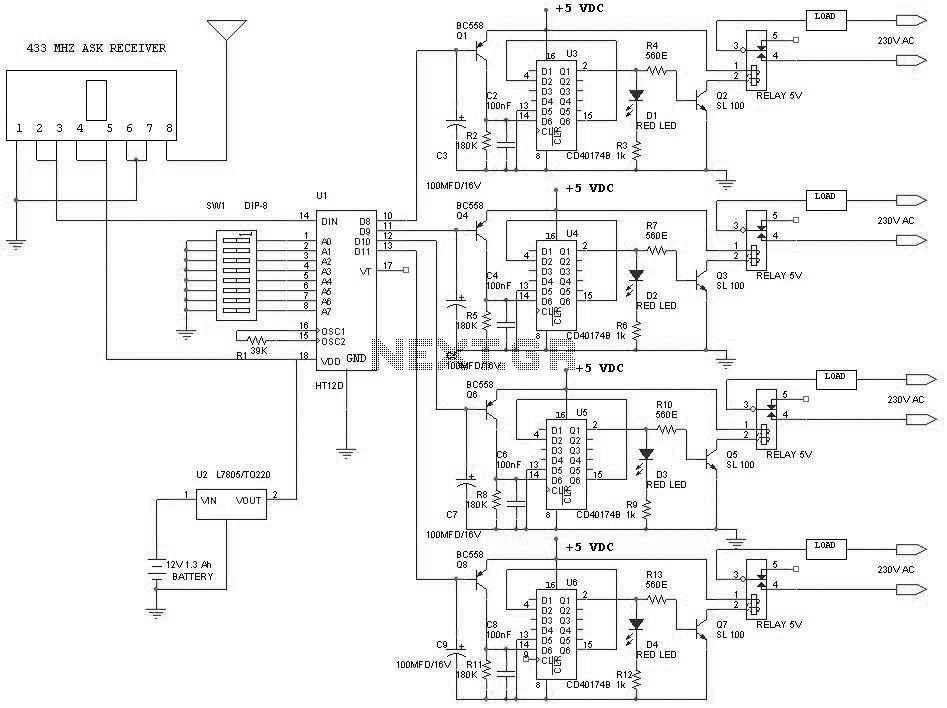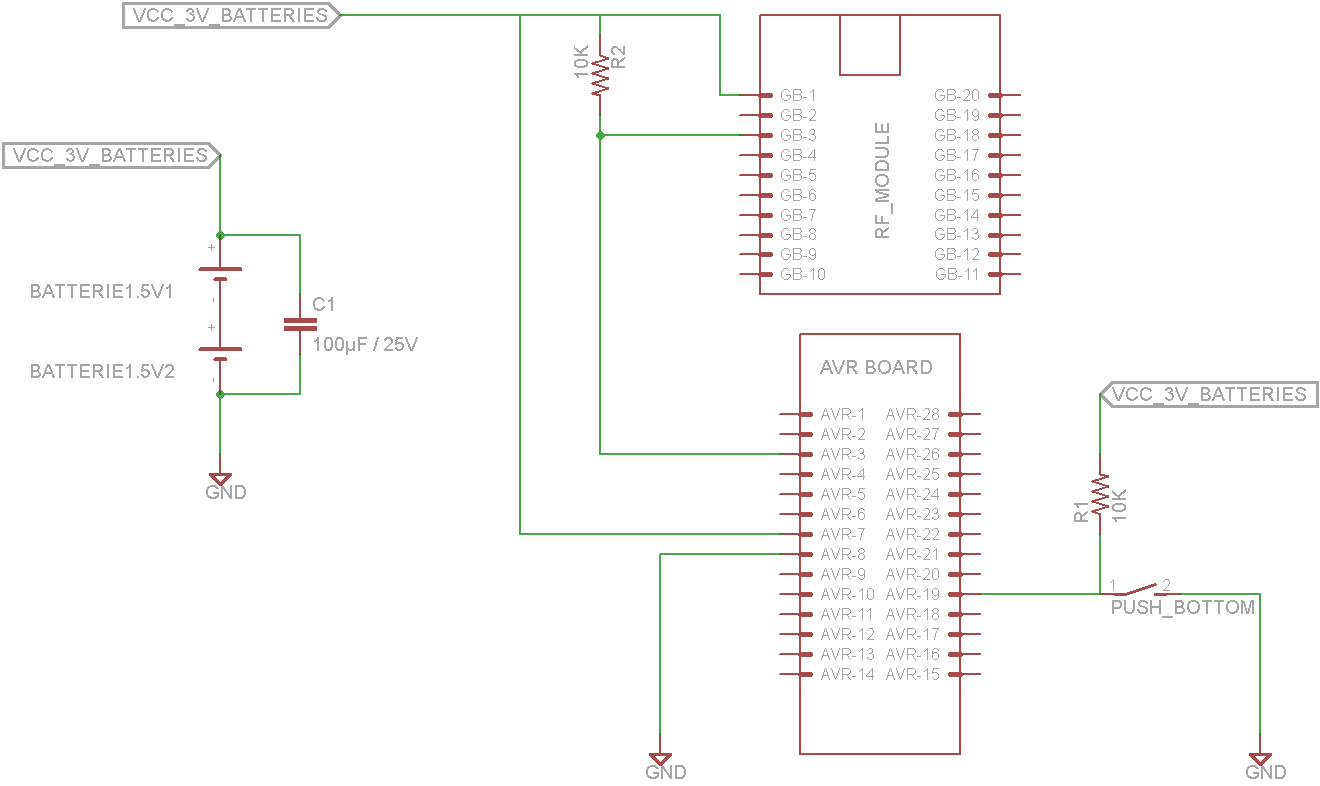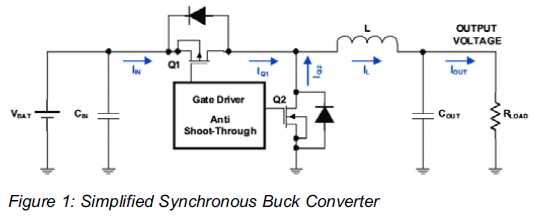
Boiler control
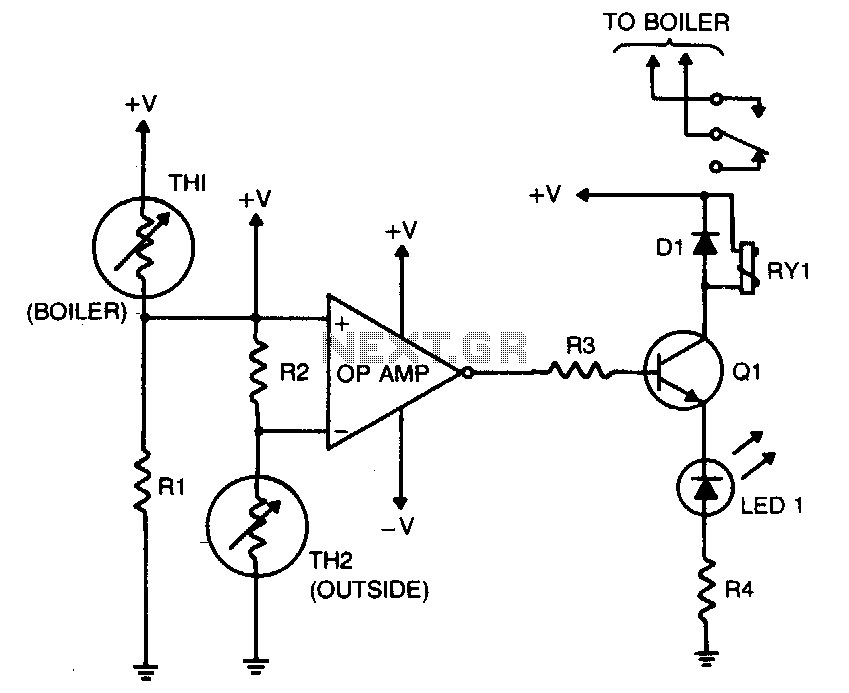
The purpose of this circuit is to control the water temperature in a hot-water heating system. It lowers the boiler temperature as the outside air temperature increases. An operational amplifier (op-amp) is utilized as a comparator. Thermistor TH2 and resistor R2 form a voltage divider that supplies a reference voltage to the inverting input of the op-amp. Thermistor TH2 is positioned outdoors, and the values of TH2 and R2 should be selected so that when the outside temperature is 25 °F, the resistance of the thermistor and resistor are equal. Resistor R1 and thermistor TH1 create another voltage divider that provides a voltage to the non-inverting input of the op-amp. Thermistor TH1 is located inside the boiler, and the values of TH1 and R1 must be chosen such that when the boiler's temperature reaches 160 °F, their resistances are equal. The output of the op-amp controls transistor Q1, which is configured as a switch. When the logic output of the op-amp is high, Q1 is activated, energizing relay RY1. The relay's contacts are wired to turn off the boiler's heat supply when the relay is energized.
This circuit utilizes two thermistors (TH1 and TH2) to monitor temperature conditions both inside the boiler and outdoors. The thermistor TH1, located within the boiler, is responsible for measuring the internal water temperature. It is paired with resistor R1 to form a voltage divider; this configuration allows the op-amp to compare the voltage output from this divider against a reference voltage derived from the outdoor conditions.
Thermistor TH2, situated outside, works in conjunction with resistor R2 to create another voltage divider. The selection of resistor values for both R1 and R2 is crucial, as it ensures that the op-amp receives appropriate voltage levels for accurate comparison. The design is such that at 25 °F, the resistance values of TH2 and R2 are equal, establishing a baseline for the outdoor temperature reading.
The op-amp functions as a comparator, determining whether the internal temperature of the boiler (measured by TH1 and R1) exceeds the set point of 160 °F. If the internal temperature is higher than this threshold, the op-amp output will be driven high, activating transistor Q1. This transistor acts as a switch, controlling the relay RY1, which is wired to the boiler's heating element. When the relay is energized, it interrupts the power supply to the heating system, effectively turning off the boiler to prevent overheating.
This circuit design is essential for maintaining safe operating conditions within the hot-water heating system, ensuring that temperature regulation is responsive to both internal and external environmental changes. Proper selection of the thermistor and resistor values is critical for the effective operation of the system, and the use of an op-amp provides a reliable means of achieving precise temperature control.The purpose of this circuit is to control the water temperature in a hot-water heating system. What it does is to lower the boiler temperature as the outside air temperature increases. The op amp is used as a comparator. Thermistor TH2 and R2 form a voltage divider that supplies a reference voltage to the op-amp"s inverting input. Thermistor TH2 is placed outdoors, and the values of TH2 and R2 should be chosen so that when the outside temperature is 25 °F, the resistance of the thermistor and resistor are equal.
Resistor Rl and thermistor TH1 make up a voltage divider that supplies a voltage to the op amp"s noninverting input Thermistor THl is placed inside the boiler and the values of THl and Rl should be chosen so that when the boiler"s temperature is 160 °F, their resistances are equal. The output of the op amp controls Ql, which is configured as a transistor switch. When the logic output of the op amp is high, Ql is turned on, energizing relay RYl. The relay"s contacts should be wired so that the boiler"s heat supply is turned off (relay energized).
🔗 External reference
This circuit utilizes two thermistors (TH1 and TH2) to monitor temperature conditions both inside the boiler and outdoors. The thermistor TH1, located within the boiler, is responsible for measuring the internal water temperature. It is paired with resistor R1 to form a voltage divider; this configuration allows the op-amp to compare the voltage output from this divider against a reference voltage derived from the outdoor conditions.
Thermistor TH2, situated outside, works in conjunction with resistor R2 to create another voltage divider. The selection of resistor values for both R1 and R2 is crucial, as it ensures that the op-amp receives appropriate voltage levels for accurate comparison. The design is such that at 25 °F, the resistance values of TH2 and R2 are equal, establishing a baseline for the outdoor temperature reading.
The op-amp functions as a comparator, determining whether the internal temperature of the boiler (measured by TH1 and R1) exceeds the set point of 160 °F. If the internal temperature is higher than this threshold, the op-amp output will be driven high, activating transistor Q1. This transistor acts as a switch, controlling the relay RY1, which is wired to the boiler's heating element. When the relay is energized, it interrupts the power supply to the heating system, effectively turning off the boiler to prevent overheating.
This circuit design is essential for maintaining safe operating conditions within the hot-water heating system, ensuring that temperature regulation is responsive to both internal and external environmental changes. Proper selection of the thermistor and resistor values is critical for the effective operation of the system, and the use of an op-amp provides a reliable means of achieving precise temperature control.The purpose of this circuit is to control the water temperature in a hot-water heating system. What it does is to lower the boiler temperature as the outside air temperature increases. The op amp is used as a comparator. Thermistor TH2 and R2 form a voltage divider that supplies a reference voltage to the op-amp"s inverting input. Thermistor TH2 is placed outdoors, and the values of TH2 and R2 should be chosen so that when the outside temperature is 25 °F, the resistance of the thermistor and resistor are equal.
Resistor Rl and thermistor TH1 make up a voltage divider that supplies a voltage to the op amp"s noninverting input Thermistor THl is placed inside the boiler and the values of THl and Rl should be chosen so that when the boiler"s temperature is 160 °F, their resistances are equal. The output of the op amp controls Ql, which is configured as a transistor switch. When the logic output of the op amp is high, Ql is turned on, energizing relay RYl. The relay"s contacts should be wired so that the boiler"s heat supply is turned off (relay energized).
🔗 External reference
